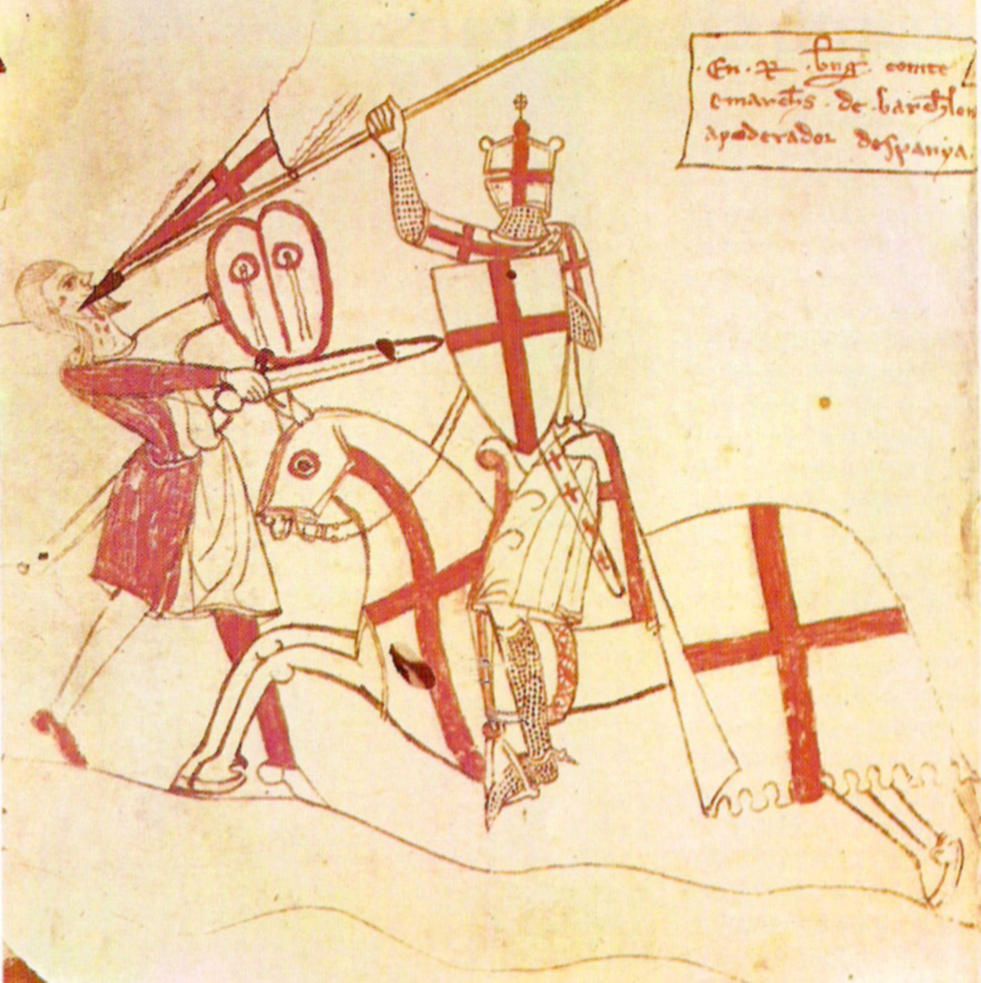Shop Amazon - Create an Amazon Baby Registry

Try Amazon Fresh
Usatges of Berenguer I

Imagen completa de Ramón Berenguer I (v. 1023 - 1076). Història Nacional de Catalunya. Rovira i VIrgili, Antoni; pàg. 521 Història de Catalunya publicada por Salvat (1978-1979): AVENTÍN, Mercè y SALRACH, Josep M. (1979)
El conde de Barcelona (inscripción: "En · R(amon) · Berenguer · comte · e march(e)s · de · Barch(e)lona · apoderador · d'Espanya") con escudo, sobreveste, yelmo, pendón, gualdrapas y vaina de la espada con el emblema de la cruz llana de gules en campo de plata atribuidas como armas personales. Miniatura del primer tercio del siglo XIV en la edición de los Usatges de Barcelona conservada en el manuscrito Z-III-14 de la Biblioteca del monasterio de El Escorial.
Fuente de la información: Alberto Montaner Frutos, El señal del rey de Aragón: Historia y significado, Zaragoza, Institución "Fernando el Católico", 1995, p. 132, fig. 20. ISBN 84-7820-283-8.
The Count of Barcelona (inscription: "Of Ramon Berenguer, count of the marches of Barcelona, apoderador of Spain") with shield, surcoat, helmet, pennant, caparison and sword scabbard with the emblem of the plain cross of gules on silver field, attributed as personal arms. Miniature of the first third of the fourteenth century in the edition of the Usages of Barcelona preserved in the Z-III-14 manuscript of the monastery library of El Escorial.
Source of information: Alberto Montaner Frutos, The signal king of Aragon: history and meaning, Saragossa, Institution "Fernando the Catholic", 1995, p. 132, Fig. 20. ISBN 84-7820-283-8.
Referenced as figure 532 in The military technology of classical Islam by D Nicolle
532. Manuscript, Usatges of Berenguer I, late 12th century AD, Catalan, Escorial (Tre).
Vol. II, p. 407: "As far as the daraqah shield was concerned, this had almost always been of leather, but by the 12th century a specific kidney-shaped version had appeared in the Maghrib.
This would later be adopted by the Spaniards and other Europeans as the Adarga and it is perhaps first seen in the hands of a Muslim foot soldier from the late 12th century (Fig. 532)."
Referenced on p.135, Arms and Armour of the Crusading Era, 1050-1350, Western Europe and the Crusader States by David Nicolle.
338 Usatges de Berenguar I, Catalonia, late 12th century
(Library, Monastery of San Loipenzo de Escorial, Spain)
Here an unarmoured ‘Moor’ is slain by Berenguar.
Though crudely drawn, the Moor clearly wears a turban, carries a kidney-shaped adarga shield with tassels,
and wields a straight sword that would be carried in a scabbard hung on a baldric.
Other Spanish and North African Illustrations of Costume and Soldiers


